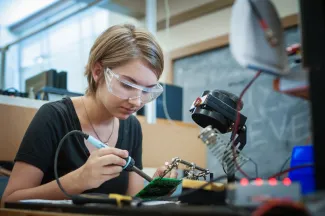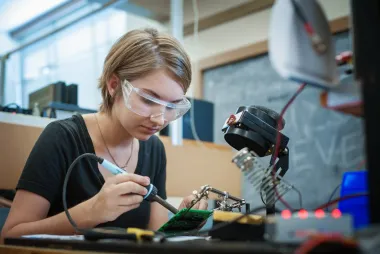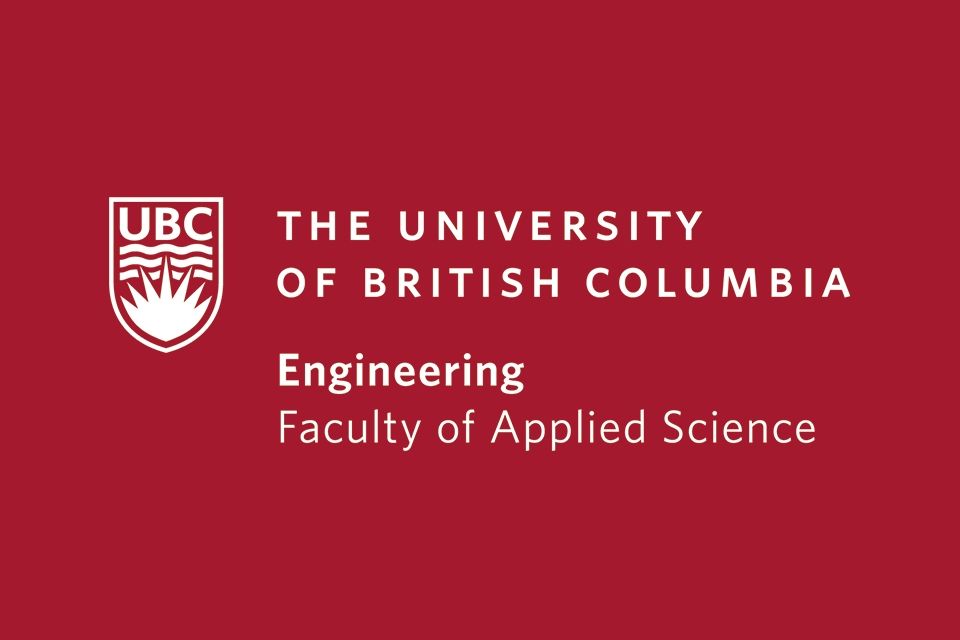
Paola Telfer
- Degree:
- Bachelor of Applied Science
- Program:
- Campus: Vancouver
Job: CEO and Co-Founder of Sens.AI
A winner in the Innovator category for BC Business magazine’s 2025 Women of the Year Awards, Paola Telfer is the CEO and Founder of Sens.AI, a company at the forefront of wearable neurotechnology that contributes to improved focus and enhanced creativity, as well as measurable results in sleep quality, attention and reaction time. And it all started with a degree in electrical engineering from UBC….
BC Business magazine’s 2025 Women of the Year Awards
Any highlights from your time at UBC?
Although I was used to being at the top of my class in high school, that was not my experience in my first year!
University became a training ground for me to learn how to challenge myself and push my limits.
It was gruelling at times.
Going into my fourth year, I educated myself on the requirements of the most sought-after job openings that would launch my career surrounded by top engineers. The postings were all in microchip design, which was an emerging field at the time. I carefully selected my courses to gain knowledge and experience in that field – which enabled me to start my career at ASIC Design in this very dynamic and rewarding deep tech.
In terms of highlights, I also met my husband during my engineering undergrad at UBC.
Why did you decide to launch a company?
I wanted to have a bigger impact. In 2018, I was part of the Singularity Executive Program in Palo Alto, which focuses on the exponential technologies that are coming of age, where the performance and cost ratio is accelerating in a non-linear way. I could see the potential of AI and how it might interface with neurotechnology, nanotechnologies and quantum computing.
I saw the power of these emerging technologies, and was excited about its potential in health care and education applications.
Because of my engineering background, I was not afraid to dive into the tech and identify opportunities to build a scalable company. I knew I wanted to focus the remainder of my career on where I could have a direct impact on some of the biggest challenges facing humanity.
How did you develop your product?
My co-founders are my husband Geoff, and Corey Julihn, an incredible engineer. We have designed and developed all of our hardware, firmware and software from the ground up, in-house – even the electrodes and digital signal processing libraries.
We spent about five years in R&D to systematize neuromodulation and integrate five powerful modalities. Our product is a closed-loop brain training system that both reads and writes to the brain and learns and adapts; it’s built as a learning system. The technology consists of a custom Bluetooth headset that incorporates proprietary brain sensors and functional brain testing. All elements of the solution are lab-grade, and the product has been available for sale internationally online since August 2023.
Our product is a closed-loop brain training system
What are some of the latest developments?
We’re getting into the data analytics and building a biological brain age clock. In 2018, we trademarked the term BrainYears™ because we knew the data set we were collecting would eventually lead us down this road of extending cognitive healthspan. We are collecting a rich, longitudinal dataset – from electrical signals of the brain and heart rate variability to event-related potential – and bringing it together into contextualized data sets.
The results of this analysis are fascinating. We have found over 100 independent biomarkers that track with age. We can see the signs of brain aging starting as young as 20 years of age. We can also see inflection points at certain ages, associated with accelerated aging. There’s an assumption that certain signs of aging are normal – but can they be reversed? Instead of waiting for symptoms, can we be proactive and reverse those markers? This is what the longevity movement is about. Sens.AI is looking at prevention of cognitive decline in a very data-driven, statistically validated way.





